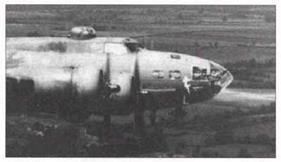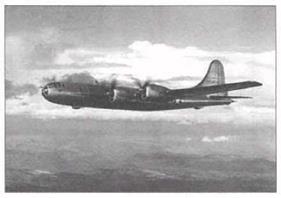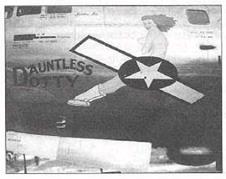World War II: The Planes That Won the War
When the key antagonists in World War I faced off again in World War II, the airplane had matured into a formidable weapon of war.
And what a weapon those new airplanes were! The United States relied primarily on two types—the bombers and the fighter planes. The bombers were massive and majestic, able to carry more bombing power in a single flight than was dropped from World War I planes in months of flying. And the fighter planes were deadly killers, with enough strength and stamina to get back home, even if they were often shot full of holes and carrying a few pounds of enemy antiaircraft shrapnel.
The “Flying Fortress”: The B-17Bombe
The greatest air legends of the war grew out of the B-17 bomber, dubbed by Boeing the “Flying Fortress” but known by the men who flew and fixed it as “The Queen of the Sky.” And the best known B-17 of them all was the Memphis Belle, a plane that its pilot, Capt. Robert K. Morgan, named after his sweetheart back home, Margaret Polk.
|
The Memphis Belle and its crew, headed by Capt. Robert K. Morgan, were the first B-17 and crew to make it through 25 combat missions without losing a life. The Belle now rests on display in Memphis. |
Apparently, Margaret Polk was good luck for Morgan and his crew. Memphis Belle was the first B-17 to complete its quota of 25 combat missions in Europe without a single crewman being killed. Hoping to capitalize on that good luck, the Army Air Corps (as the Air Force was then called) sent Morgan and his very fortunate crew on a publicity
tour to talk to civilians and soldiers and to arouse public enthusiasm for U. S. involvement in the war. We have mostly forgotten it now, but before the war most Americans, including flying hero Charles A. Lindbergh (see Chapter 5, “Lindbergh, Earhart, and the Rise of the Airlines”) and industrialist Henry Ford, opposed the U. S. involvement. So, in terms of building the United States resolve to continue fighting the war, Morgan’s mission as a booster might have been even a more important one than his bombing tour over Germany.
|
Plane Talk Margaret Polk was only one of the hundreds of hometown sweethearts who were remembered with airborne namesakes during the war. Pilots routinely named their planes, often after their wives or girlfriends, and adorned them with colorful—and sometimes risque— "nose art^ The practice has fallen out of favor with the more sensitive modem Air Force, which prefers brutish nicknames to romantic—and potentially sexist—ones. |
|
From raucous to racy, “nose art” adorned the noses of most World War II aircraft. The themes comforted pilots, who missed home and loved ones. |
Morgan and his men also became matinee idols, thanks to a documentary called The Memphis Belle by Hollywood director William Wyler. Wyler later made his name as a wartime filmmaker by directing the acclaimed The Best Years of Our Lives, and the Oscar®-winning documentary The Fighting Lady.
 Plane Talk
Plane Talk
When Boeing delivered a stripped-down B-17 to the Air Force in 1941, the price tag was a rock-bottom $252,000, not including the engines. By the time the government loaded the "Flying Fortress’ with all optional equipment—luxuries like guns and propellers and so on—the sticker price, even in 1941 dollars, was a bit more shocking: about $350,000 (or in 1999 dollars, about $3.4 million). Boeing delivered 6,981 of the planes before the production line shut down.
But even after flying 25 European missions and getting all his men back safely, the war wasn’t over for Morgan. A stroke of fate sent him back into battle in a different kind of airplane and in a whole different kind of war.
The B-29 “Superfortress” Bomber
|
On Course Morgan and the Memphis Belle were the subject of a 1990 movie, also called The Memphis Belle. It was a modest success by Hollywood’s yardstick, but a blockbuster for World War II vet. era ns and flying buffs. Matthew Modine played the part of Robert Morgan, but the film’s true star was the fabulous bomber, a stand-in for the real Memphis Belle. Check it out if only to see the accurately recreated plane. 4———————————————— J |
During a tour through a Wichita, Kansas, factory, Morgan was given a peek at a secret new airplane that military officers hoped would reverse the nasty beating the Japanese were giving the Allies in the Pacific. The plane was the B-29 “Superfortress,” and Morgan instantly fell in love with the big, blunt-nosed behe-moth.
Like the B-17, the “Superfortress” was made by Boeing. It was a monstrous four-engine, 140-foot bomber that could fly almost across the United States and back on a single load of fuel. It carried 20,000 pounds of bombs, about the same as the B-17, but the “Superfortress” could fly over 5,800 miles at 220 miles per hour, while the older B-17 could only manage 3,800 miles at 150 miles per hour. In other words, the B-29 was made for missions across the Pacific to Japan, while the B-17 was best suited for the closely fought European war.
|
The B-29 “Superfortress” was the “Big Iron” that helped mop up the war in the Pacific. Like the B-17, it was made by Boeing, which would thrive after the war as an airliner manufacturer. |
The military brass now gave Major Morgan his own command, and in the months between October 1944, and April 1945, Morgan flew his airplane, Dauntless Dotty, on another 25 bombing missions, including the deadly firebombing of Tokyo. In April, having survived 50 combat missions in two theaters of war, Morgan finally left the service.
The Memphis Belle survived the war and now is on permanent display on Memphis’s Mud Island. But Dauntless Dotty didn’t fare as well. Lt. William Kelly was flying Dotty home to the United States when he and the crew landed on Kwajalein Island for a bite to eat before starting the long trip to the mainland. When he took off, though, something catastrophic happened that no one has fully figured out. Dotty crashed into the Pacific, killing ten of the thirteen crewmen on board.
|
After flying 25 missions in the B-17 Memphis Belle, Robert Morgan asked for another tour of duty, this time in the war in the Pacific against Japan. Morgan piloted Dauntless Dotty, a B-29, and again completed 25 missions before the war ended. |
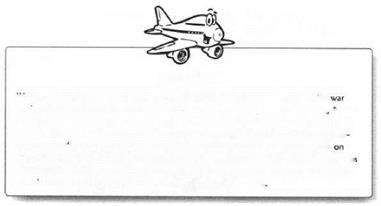 Plane Talk
Plane Talk
with the help of the B-17, the war in Europe ended May 8, 1945. But the Pacific
![]() against Japan took months longer to win. When victory against Japan finally came
against Japan took months longer to win. When victory against Japan finally came
shortly after President Harry S Truman ordered atomic bombs dropped on the Japanese cities of Hiroshima and Nagasaki. In both cases, it was B-29 “Superfortresses" that deliv ered America s secret weapon. Col. Paul W. Tibbets dropped the first atomic bomb
August 6, 1945, from a B-29 called Enola Gay that was based on Tinian Island. Three day later, another B-29, Bockscar, piloted by Maj. Charles W. Sweeney, dropped the second
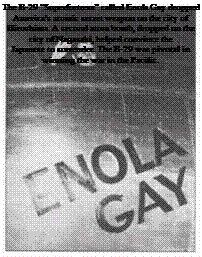 |
atomic bomb on Nagasaki. The war ended on September 2, 1945











